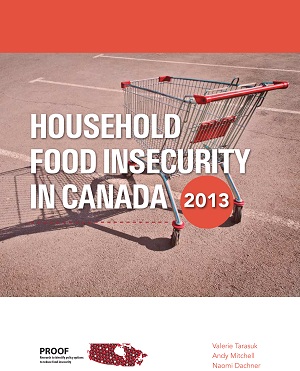Household Food Insecurity in Canada, 2013
October 13, 2015
Due to a 2015 redesign of the Canadian Community Health Survey (CCHS) that this report is based on, Statistics Canada cautions users against comparing estimates from CCHS from 2015 onwards to those prior to 2015.
UPDATED MAY 12, 2017: We have recently learned that Ontario, Newfoundland and Labrador, and Yukon opted out of food insecurity measurement in 2015 and 2016. The reports have been updated to reflect this development.
How to cite: Tarasuk, V, Mitchell, A, Dachner, N. (2015). Household food insecurity in Canada, 2013.Toronto: Research to identify policy options to reduce food insecurity (PROOF).Retrieved from https://proof.utoronto.ca/
About:
In PROOF’s third annual report, it is clear that household food insecurity remains high across Canada. Unfortunately, not all provinces and territories chose to measure food insecurity in 2013 (British Columbia, Manitoba, Newfoundland and Labrador, and Yukon did not participate). Among those that did, we observed no significant drops and even upward trends in Ontario and the Atlantic provinces.
The 2013 report continues the narrative from previous years; household food insecurity has grown in Canada since measurement and monitoring of the problem began in 2005. More than 1 in 6 children lived in households that experienced food insecurity in 2013.
Like in previous years, the majority of food insecure households in Canada were working in 2013, demonstrating a need to improve current programs designed to compensate for precarious employment. The findings continue to emphasize the need for development and implementation of public policies to address food insecurity.

The PROOF status reports are protected under a Creative Commons Attribution-NonCommercial 4.0 International License that allows you to share, copy, distribute, and transmit the work for non-commercial purposes, provided you attribute it appropriately to the original source. Please see Licensing & Attribution for more information.


